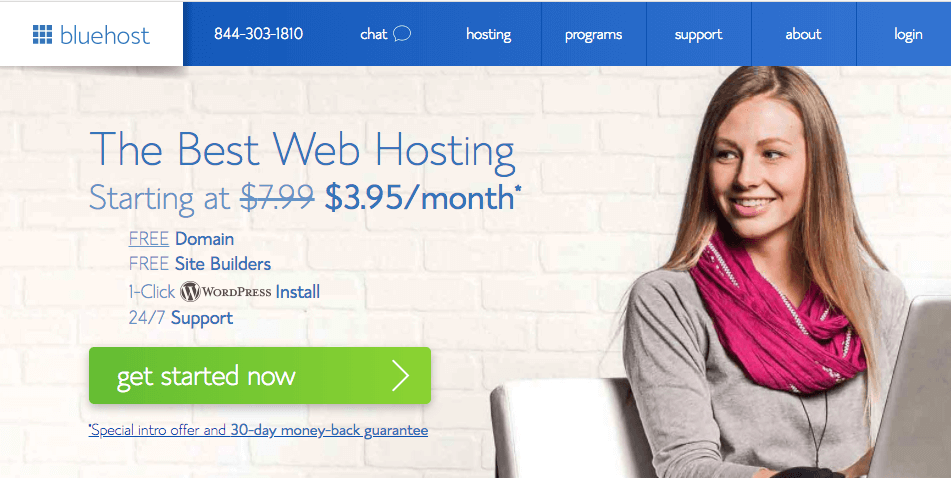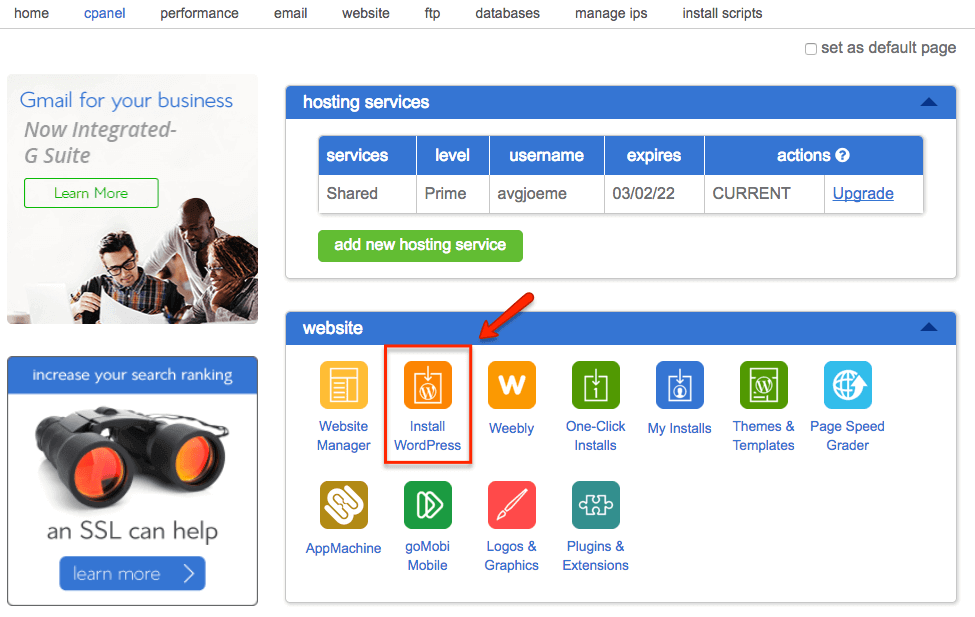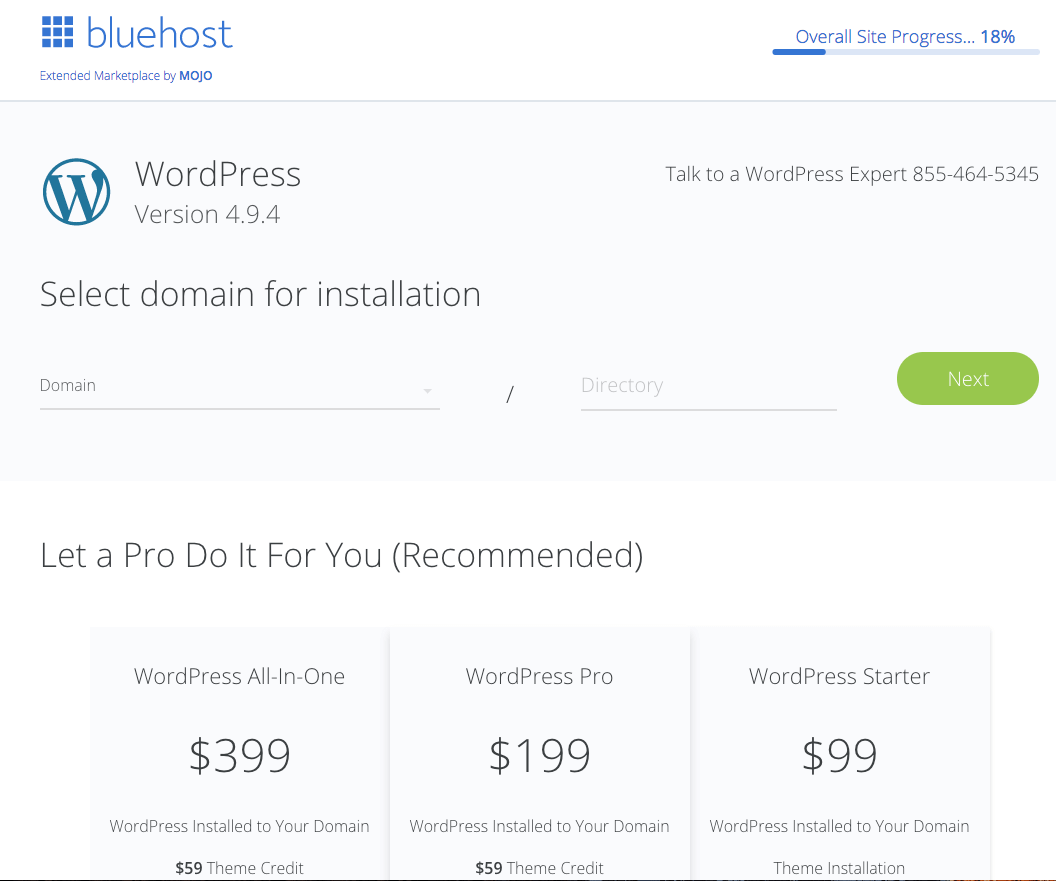People decide to start a blog for a variety of reasons.
Maybe you really enjoy writing and just want a place to keep all of your work. Maybe you’re extremely passionate about a topic and want to spread the word to others. Others may be looking to replace their income and live the digital nomad life. Chances are you’re a combination of all of them.
When I started Average Joe Finance I had the goal of helping others better understand and manage their money. And while I didn’t start blogging to become rich, it is nice to be able to make some money to help support the site.
Starting a blog is pretty inexpensive, but if you want to grow your audience chances are you’ll need some money for advertising or improvements to your site. It was this desire to have my site be self-sufficient that led me down the path on how to make money blogging.
Maybe you’re in the same position I was a year ago – with a great idea but not sure how to start.
Maybe you have your blog, but are looking for some income to help grow your site.
Maybe you’re looking to replace your income from an online business.
Either way, the first step is making your first dollar. Then your first fifty or hundred dollars. From there the sky’s the limit. Once you have a process in place, you really are only limited by your effort.
A lot of people think they need to have tens of thousands of page views in order to monetize their blog. This simply isn’t true. I was able to earn my first $100 within a few months with only a thousand or so page views a month.
So, if you’re ready to learn, I’m going to walk you step-by-step through the process I took to monetize my blog. By following these steps, you’ll be one your way to earning your first $100 in no time.
Start Your Blog Off Right with the Ultimate Blog Starter Kit
Get My Free CopyStart Your Blog
The first time to make money blogging is to actually create your blog. If you already have a blog in place you can skip to the next section. If not . . .
Determine a Topic
Selecting a topic to write about should be simple, but for many people, this is the hardest step. Often it is easy to succumb to decision paralysis. When you literally have hundreds or thousands of options, you become so overwhelmed that you can’t make a simple decision.
Have you been wanting to start a blog for a while, but don’t know what to write about? Do you keep searching for the perfect topic?
If that’s the case, then stop overthinking it and just pick a topic! Really. Stop worrying about trying to find the best topic in the best niche and just go with what feels right to do. The first step to accomplishing any goal is actually starting.
So, to come up with your blog’s topic, go back to the basics. What are your interests, hobbies, passions? Pick one or two and try writing a few sample articles. If you have trouble writing one or two articles, chances are you won’t be able to sustain a blog. But if the words are just flying off your fingertips? Then you’ve found your topic.
A lot of people talk about making sure you write in a popular niche. Sure, writing about popular topics gives you more potential readers, but it also increases competition. The interest is a big place. Chances are more people besides you’re interested in the topic you choose – even if you write about hip-hop dancing robots.
My point is, don’t focus so much on the niche. Write about what interests you and focus on creating quality content and the readers will come. Plus, while high traffic helps, you don’t need a lot in order to be successful or monetize your site.
Domain and Hosting
Once you have a topic, the to launch your site you’ll need two things – a domain and a hosting provider. I use Bluehost to host my site. Not only can you sign up for Bluehost for only $3.95/month, they also give you a free domain.
To sign up for Bluehost, simply click this link and click “get started now”.

Next you can select which plan you want. The Basic plan is fine for most people just starting out, but if you can afford the extra $1/month I would recommend the Plus plan.
The benefits of the Plus plan over the Basic include being able to have more than one website, unlimited space and $200 in marketing offers. The marketing offers include free Bing and Google credits, which come in handy when it comes time to market your site.

Once you select your plan, you get to select your domain. As long as the domain is available, Bluehost will include it free of charge for as long as you’re a customer.

Next, you just need to create your account and enter your payment information and you’re good to go.
Setting Up WordPress
Once you have your domain and hosting in place, you need to create a site for people to visit. I use WordPress and it’s what powers over 25% of all websites.
WordPress could be a little intimidating at first, but it’s pretty easy to use once you get the hang of it.
Setting up a WordPress site only takes a few minutes with Bluehost.
Start by clicking the WordPress install button on the Cpanel.

Select your domain and click Next. You can ignore those ads at the bottom for professional installation.

Next, enter all of your site and admin info. This is the information you will use to log into your site to make changes to your theme or schedule posts.
Remember don’t use admin as your username! If you do, you’ll be asking to get hacked.
After a few minutes of letting WordPress install you’re done!

At this point, Bluehost will show you’re only 50% complete, but WordPress has been completely installed.
The remaining 50% is picking a theme and customizing your site, but you can do that from your site.
To log into your new site, go to www.yourdomainname.com/wp-admin and enter the username and password you created.
From the admin dashboard in WordPress you can select your theme and start posting to your site. Customizing your theme could be an entire post to itself. There are a lot of great tutorials available online that will walk you through this process.
If you’re interested in some of the other features Bluehost offers, check out my article on the five reasons I use them to host my site.
You’re a Brand
Once your site is live, it’s time to start thinking of yourself as a brand. Not doing so is what prevents a lot of bloggers from making money.
If you’re serious about earning an income (even a few hundred dollars a month) you need to be serious about your product. In this case, the product is you. Your readers are going to keep coming back because of you. It’s your style and insight on topics that captured their attention. And it’s that same style and insight that is going to keep them coming back long enough to build the trust it takes to use the products you recommend.
Think about your favorite sites. What do you love about them? Why do you keep going back for more?
Chances are they have a consistent look and feel across their posts. They are authentic. This is their brand and if you want to be successful you need to stay true to your brand. Don’t try chasing the latest fad for some quick traffic or cash grab. While it may give you a temporary boost, it won’t help you build long-lasting, loyal followers.
Affiliate Marketing
In my opinion, the quickest way to being monetizing your site if with affiliate marketing. If you’re new to the online business world, you may be asking what is affiliate marketing?
Affiliate marketing is when you market and sell someone else’s product. In return for sending them a sale, you receive a commission. The commission you receive can vary pretty drastically. Sites like Amazon offer only a few percent, whereas other bloggers typically offer 20-30 percent if you sell one of their products or courses.
A quick note on affiliate links. Make sure you set them to nofollow otherwise search engines may penalize you as spam. There are a lot of plugins that make it easy to set certain links to nofollow. I use Rel Nofollow Checkbox, which adds a checkbox to the link option in WordPress.
Picking Affiliates
If you’re ready to start affiliate marketing, you need to find affiliate products to offer. A great place to start is with the products you already use.
What courses did you take to learn about your niche?
What products do you use that are invaluable to what you write about?
Come up with a list of 5-10 potential products or services you could market. If you’re looking for ideas, here are some of the products I’m an affiliate for:
Typically, if you take courses from other bloggers, they have a way for you to become an affiliate. If it’s a product or service from a company, it can be a little more challenging to find their affiliate program.
The easiest thing to do is Google company name + affiliate program. Or you can check the major affiliate marketing programs like Click Junction or Share a Sale. These networks manage affiliate programs for thousands of different companies, so chances are they will have what you’re looking for.
Getting Your Affiliate First Sale
Just signing up for an affiliate program and sticking a link or two on your page isn’t enough to drive sales. This goes back to thinking of yourself as a brand or platform.
What about your content is going to make people want to click on your link?
What is the value that product offers?
You need to create content that takes the time to explain the pros and cons of using the product. Think about what made you purchase it. Why do you continue to use it? Why it is better than a competitor’s product? These are the types of questions you need to answer with your posts. By creating content around the affiliate, you’re much more likely to drive sales and in turn, earn commissions.
Some types of posts that work well are product reviews, head-to-head comparisons and gift guides. These posts make it easy to naturally insert affiliate links.
If your site’s been up for a while and you are just starting to incorporate affiliate links, start by identifying your most popular posts. See if any of them relate to one of your affiliates. If they do, try to incorporate them into the post. The great thing about this technique is you already know you’ll have traffic going to the article. Now with the added affiliate content, you have the chance to earn some revenue.
You can see some examples of posts in which I incorporate my affiliates with product reviews here and here or how I incorporate them into existing posts here.
Building Traffic
While you don’t need a ton of traffic (remember I started monetizing this site with around a thousand page views per month) you do need some traffic. There are countless ways to try and increase traffic. So many in fact that it’s easy to get overwhelmed.
In order to simplify the process a bit, here are some quick tips to help you get started.
Search Engine Optimization (SEO)
SEO is all about telling search engines that you’re an expert in your field. Just like how becoming an expert in real life takes time, gaining traction with SEO does as well. But that doesn’t mean you should wait to get started.
Here are some things you should include in every post:
Permalinks – This is a setting in WordPress that ensures the URL of your posts don’t change.
Headings – Make sure to break up your paragraphs with headings. Just don’t select an H1 heading, there should only be one of those per page and it should be your title.
Keywords – Gone are the days when you just repeated the same keyword over and over again. Now Google looks for how naturally the keywords are used in your writing. Try searching your keyword in Google or using their Keyword Planner to get related keywords. Pick a few of them and work them into each post – just don’t overdo it.
Internal Linking – Make sure you link to a few of your other pages in each post. This can be challenging at first but gets easier as you produce more content. You can always go back and ad links later as you write more. This internal linking helps keep visitors on your site, but it also helps pass around your “link juice” as your site grows.
This is a really basic list to get you started. I recommend installing the free Yoast SEO plugin which will help with a lot of this.
Community Building
Once your site is live, you should start building your internal and external communities.
Your internal community consists of your readers. If order to stay engaged with them you should have a way for them to contact you and sign up for an email list. I use MailChimp for my list and they offer free plans to get you started. Even if you write an email once a month, don’t wait to start building your list.
To build your external community start reaching other to other bloggers in your niche. Comment on their posts or even share them with your readers. One of the great things about blogging is that it is a big community. People want to help each other. Plus, as you start getting more involved you’ll find ideas for new posts and even opportunities to guest post.

Social Media
My advice for social media? Don’t try to sign up for every platform right away. Pick one or two to focus on.
It’s not easy to gain traction so trying to learn what works on every network at once is setting yourself up for failure. The two social media platforms I focus on are Facebook and Pinterest.
Chances are you use Facebook for a personal page so setting up and managing a business page should be simple. The key to running your page is to find an interesting and thought-provoking article that fit your theme. You want to engage your followers. The more likes, comments and shares you get the more Facebook will spread what you post. I’ve you’re looking for pointers on how to build a following, I highly recommend Strategies Worth Sharing.
The other option on Facebook is to join groups in your niche. This is a great way to build your external community. But it’s also a great way to interact with potential readers. The goal of joining a Facebook group is to add value. Don’t join just to promote your site non-stop. Doing so is a great way to get banned.
Sure, you can drop a link or two to your site, but only if it’s natural and can truly help another group member. Maybe someone is asking a question about how to use a feature in Photoshop. You just so happen to have an article about the Top 10 Photoshop Tips for Beginners, so you write a response and link to the article in case they want to read more. Using this method, you’ll be more likely to gain a reader than if you would just spam the group board.
Over time Pinterest has grown into a valuable social network for gaining traffic. I will admit that some niches work better than others, but you can still have success no matter what you write about.
The key to Pinterest is getting your pins in front of as many people as possible.
In order to do so, you need to focus on creating quality pins and joining Group Boards.
Look through Pinterest and see what catches your eye. What color is the text? Is the font a script font or not? What about the picture made you stop? Take the best parts of these pins and incorporate them into your pins. Typically, vertical pins that contain bright colors and different font styles works best. Plus, you need a catchy headline. The great thing about Pinterest is that you can make multiple pins for each post (which you should do!). This way you can test variations of the same pin to find out what works and what doesn’t.
Group Boards are a great way to gain exposure on Pinterest. If you’re unfamiliar with Group Boards, they are a Pinterest Board that multiple people can pin to. They typically have much higher number of followers, which means more people to see and potentially repin your content.
To find Group Boards, I look at other bloggers in my niche and see what boards they belong to. Each Group Board has its own set of rules for joining and pinning, but they are all pretty straightforward. Join as many Group Boards as you can and start pinning.
The one downside to Pinterest is how time consuming all the pinning can be. What really changed things for me was joining Tailwind. With Tailwind, I can schedule a month’s worth of pins in the amount of time I used to spend manually pinning each day! Plus, they also offer Tribes, which act like Group Boards for Tailwind users.
If you’re interested in learning how I tripled my Pinterest reach with Tailwind, check out this post.
Putting It All Together
If you just started blogging or are looking to begin monetizing an existing site, affiliate marketing is a great solution.
As long as you have valuable, quality content you don’t need a lot of traffic to earn affiliate commissions. The key is to find affiliates that fit your niche and will truly help your readers. Then it’s a matter of producing the right content and promoting that content through social media or SEO.
No matter what, just remember you get out what you put in.






Leave a Reply